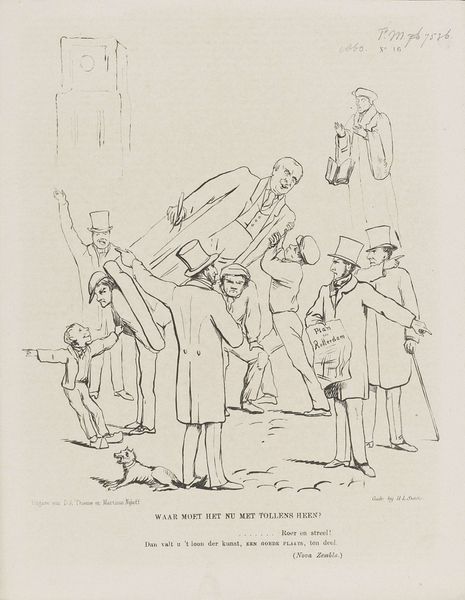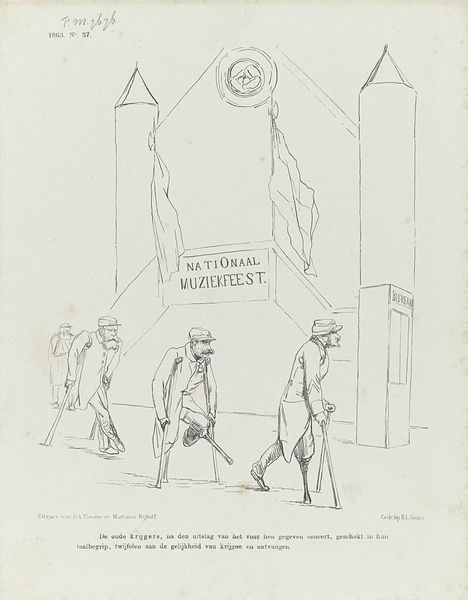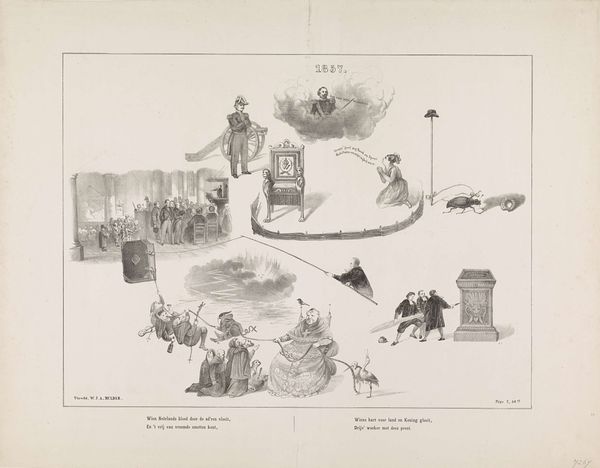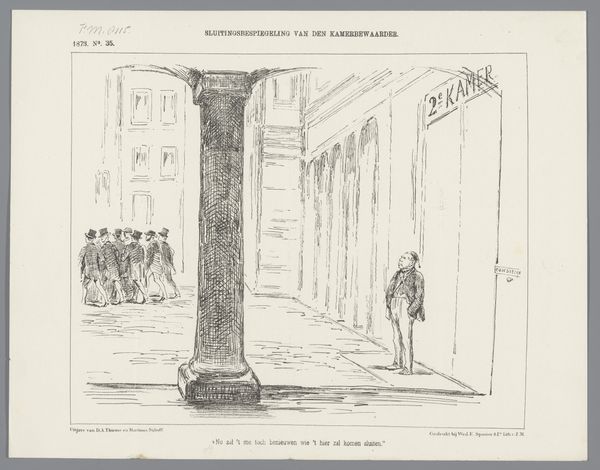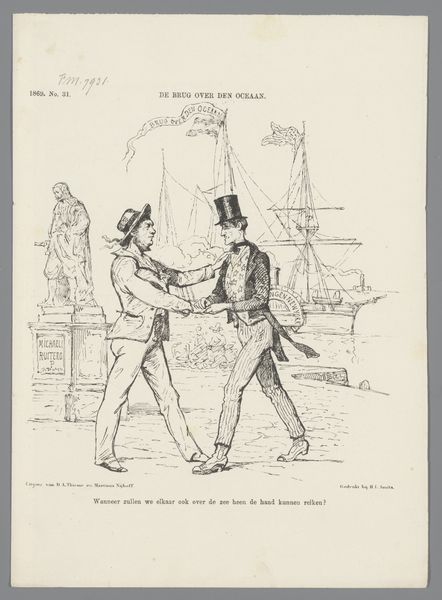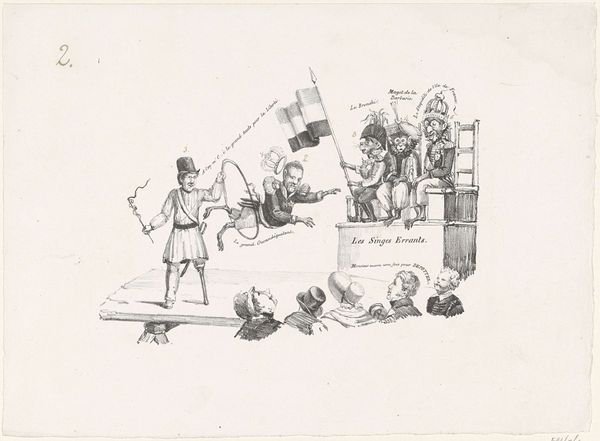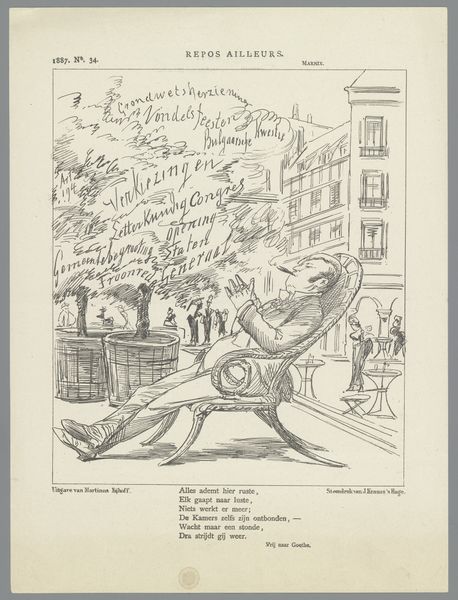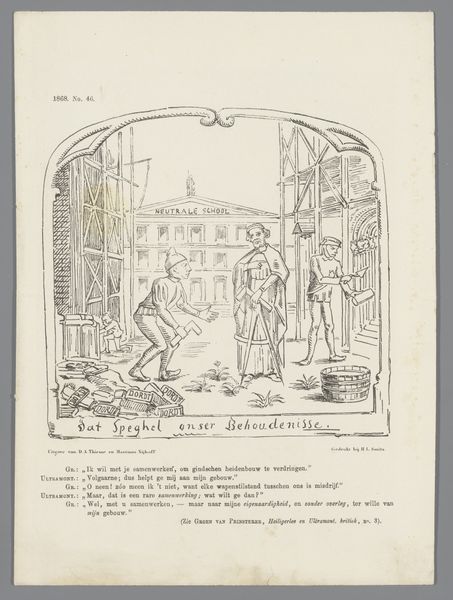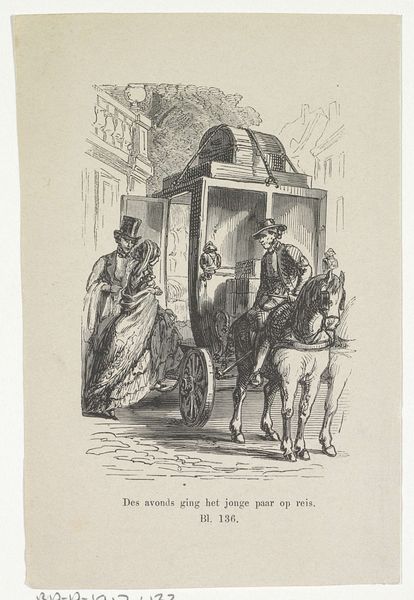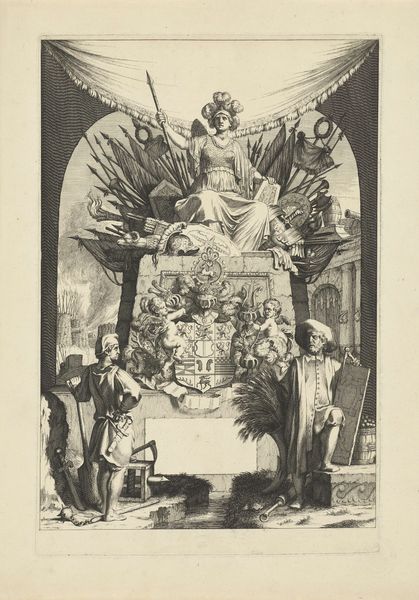
drawing, ink, pen
#
drawing
#
comic strip sketch
#
quirky sketch
#
dutch-golden-age
#
modern-moral-subject
#
caricature
#
sketch book
#
personal sketchbook
#
ink
#
idea generation sketch
#
sketchwork
#
pen-ink sketch
#
sketchbook drawing
#
pen
#
genre-painting
#
storyboard and sketchbook work
#
sketchbook art
Dimensions: height 275 mm, width 215 mm
Copyright: Rijks Museum: Open Domain
Editor: This is a pen and ink drawing from 1861, "Spotprent op het aftreden van minister F.A. van Hall," by Johan Michaël Schmidt Crans. It feels quite stark and desolate, almost like a political graveyard. What's your interpretation of it? Curator: It’s powerful, isn't it? This drawing serves as a pointed critique of power structures during a period of significant political upheaval. What stands out to me is how Schmidt Crans uses clothing—or the absence of bodies—to symbolize the ministers. Clothes abandoned or hung limply, each empty suit tells a story about the failures or inadequacies of the individual who once wore it, and the socio-political context from which that figure came from. Editor: That's fascinating! I hadn’t thought about the absence of people being so symbolic. What about the text in the drawing? Curator: The text, especially the phrase 'Opaschdaggebe,' and 'Wat er van het Aschdag-ministerie over bleef,' underscores a sense of ending, perhaps even cleansing. Think about the context: 1861. What societal norms were at play? What populations were marginalized? A political cartoon like this offers a crucial perspective on dissenting voices within that framework. Can you imagine how this image would be received depending on where you fell in that societal hierarchy? Editor: So it's about using visual language to question those in power, highlighting the societal impact of their failures and reflecting those intersectional points of view? Curator: Exactly! It pushes us to think about how power functions, how it’s maintained, and who benefits. This caricature captures a specific moment of political fallout and allows us to consider broader questions about accountability and social justice, and how that image would shift through time. Editor: I've definitely gained a new understanding of political art and how it reflects social narratives. Curator: It highlights the ways that images are invaluable tools in those struggles for representation and equality.
Comments
No comments
Be the first to comment and join the conversation on the ultimate creative platform.
